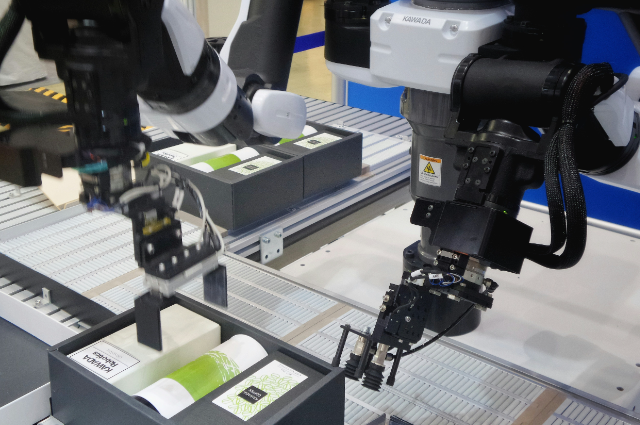
Photo by Possessed Photography on Unsplash
The Double-Edged Sword of AI: Jobs Lost, Jobs Gained
Summary:
- This article delves into the multifaceted impact of artificial intelligence on employment, highlighting the looming shadow of potential job losses alongside the emergence of new opportunities in AI-related fields.
- It explores the economic and social consequences of AI-driven automation, identifies proactive measures for mitigating negative impacts, and presents success stories of individuals thriving amidst technological disruption.
- By fostering a culture of lifelong learning, adaptability, and innovation, individuals can position themselves for success in a rapidly evolving labour landscape.
- Through collaboration among policymakers, educators, businesses, and individuals, a future where AI augments human capability and fosters economic growth can be collectively envisioned and realized.
Artificial intelligence has evolved from the realms of science fiction to the forefront of innovation, reshaping various aspects of society, including the job market. The rapid expansion of AI capabilities has raised concerns and excitement simultaneously, as it brings both opportunities and challenges to employment worldwide.
The Looming Shadow of Job Losses:
The integration of AI-powered automation in industries across the board poses a significant threat to existing job roles. Repetitive tasks such as data entry, manufacturing assembly, and customer service are at risk of being automated, potentially leading to the displacement of millions of workers. Industries like transportation face disruptive transformations with the advent of self-driving technology, jeopardizing the roles of truck drivers, taxi drivers, and other professionals within the sector. Even traditionally secure white-collar jobs are not immune to AI advancements, with algorithms increasingly involved in tasks like legal research, financial analysis, and medical diagnostics.
The consequences of widespread job losses could be far-reaching. The economic repercussions include heightened unemployment rates, reduced consumer spending, lower tax revenues, and a potential rise in social unrest. The human toll of such displacement is profound, manifesting in feelings of worthlessness, anxiety, and depression among individuals who find themselves without employment in the wake of automation.
The Silver Lining: New Opportunities Emerge:
However, amidst the specter of job losses, AI also presents a silver lining by creating new employment opportunities. The demand for professionals skilled in AI development, data science, cybersecurity, and related fields is skyrocketing. These emerging roles require a blend of technical expertise, critical thinking, and creativity, offering a pathway to a prosperous career for those with the right skills.
AI's impact extends beyond specialized roles, with potential opportunities unfolding in sectors like healthcare, education, and environmental sustainability. In healthcare, AI-powered tools can enhance medical image analysis for more accurate diagnoses. In education, AI can personalize learning experiences for students, catering to individual needs and learning styles. Additionally, in environmental sustainability, AI can optimize resource management, leading to more efficient and eco-friendly practices.
Navigating the Transition:
The transition to an AI-driven future necessitates proactive measures to mitigate negative impacts and capitalize on the positive outcomes. Stakeholders at various levels play a crucial role in shaping the future of work:
- Governments can implement policies such as universal basic income or skills development programs to support individuals displaced by AI-driven automation.
- Educational institutions must adapt their curricula to equip students with the necessary skills for emerging AI-related roles.
- Businesses should invest in retraining programs for the existing workforce and actively create opportunities in AI-related fields.
Conclusion:
The impact of AI on the job market is undeniable, with job losses on one end of the spectrum and new opportunities on the other. By acknowledging the challenges, embracing the possibilities, and taking proactive steps, we can effectively navigate this transition to ensure that AI serves as a tool for progress rather than a harbinger of hardship. The future of work is malleable, and it is through strategic choices and actions that we can shape a future where AI enhances human potential and economic prosperity.
In exploring the complexities of AI's impact on employment, it becomes evident that the road ahead is paved with intricacies and nuances that demand careful consideration and proactive planning to unlock the full potential of AI technology while addressing the challenges it poses to the workforce. Success stories of individuals who have thrived amidst AI disruption serve as beacons of hope, showcasing the transformative power of adaptation and innovation in the face of change.
As we navigate the evolving landscape of work in the age of AI, it is crucial to strike a balance between acknowledging the disruptions and seizing the opportunities presented by technological advancement. By fostering collaboration among policymakers, educators, businesses, and individuals, we can collectively shape a future where AI augments human capability, fosters economic growth, and paves the way for a more inclusive and resilient workforce.
By fostering a culture of lifelong learning, adaptability, and innovation, individuals can navigate the shifting tides of the job market with resilience and determination. Through upskilling, embracing emerging technologies, and cultivating a growth mindset, workers can position themselves for success in a rapidly evolving labor landscape.
Embracing the transformative potential of AI while guarding against its disruptive implications requires a concerted effort and collective vision for a future where technological advancement amplifies human potential rather than displacing it. With strategic planning, investment in education and training, and a commitment to inclusive growth, we can harness the power of AI to create a future of work that is both intelligent and equitable.
In conclusion, the dual nature of AI as a double-edged sword in the realm of employment underscores the need for a comprehensive approach that embraces change, fosters innovation, and prioritizes the well-being of individuals in the workforce. By striking a balance between disruption and opportunity, we can navigate the complexities of the AI-driven future to create a world where technology enhances human potential and economic prosperity for all.
